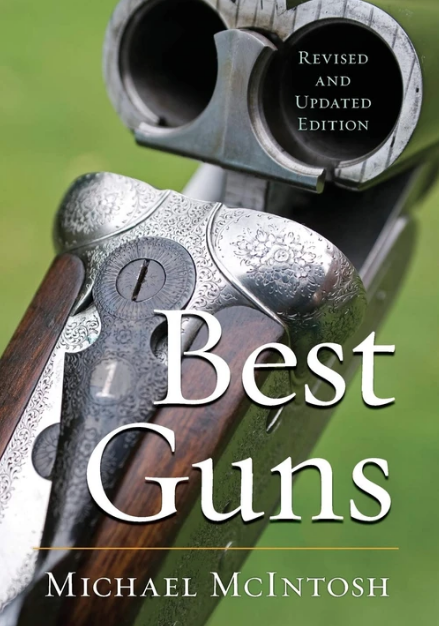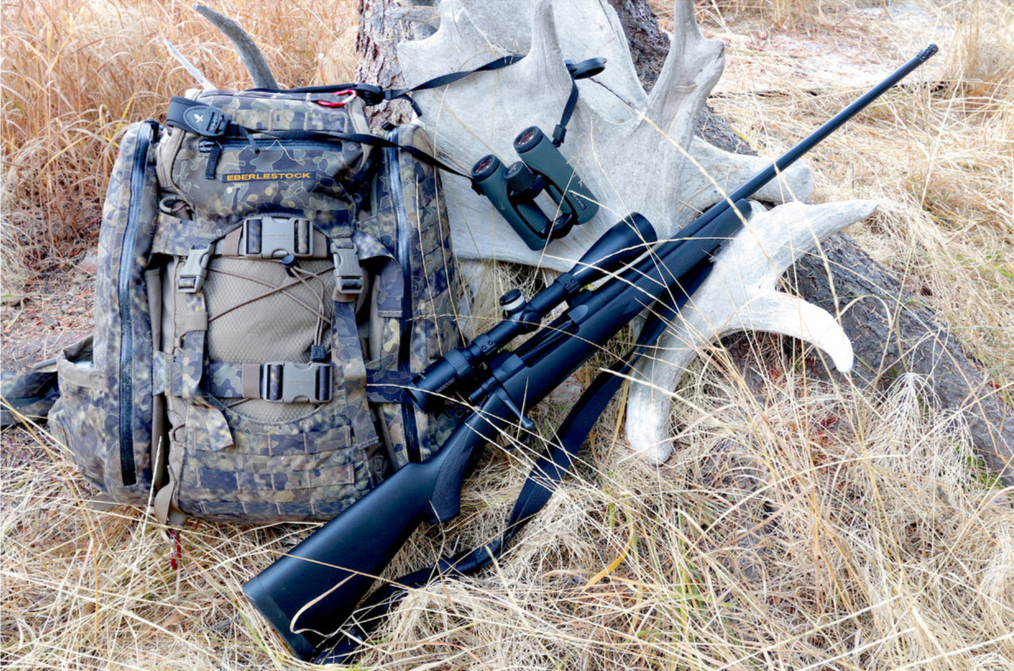It was the 6.5 Creedmoor of the 1960s. Flying off the shelves. Everyone was chambering it. Everyone who didn’t shoot it wanted to. Or they pretended they didn’t.
Remington’s 7mm magnum blew Winchester’s 264 magnum right off the plains and into early retirement. Almost overnight it made the 7x57mm Mauser an afterthought. And now it’s becoming an afterthought itself. For no good reason.
As becomes the trend with virtually every rifle cartridge colored with a patina of history, the 7mm Remington Magnum has become a whipping boy. Every elk ever lost, every deer ever mangled, every barrel ever burned out has tarnished the 7mm Rem. Mag.
It has been a flawed cartridge from the start. The neck is too short, the shoulder too sloped, the belt superfluous. It kicks too much. It’s too powerful for deer, not powerful enough for elk. It’s not accurate. And my favorite, “It shoots too fast for bullets to open up!” Funny. They don’t say that about the 300 Win. Mag., which shoots the same weight bullets about 200 fps faster.
Let’s ignore for now all the newer, quicker 7mms gathering fans: the 7mm STW, 7mm Remington Ultra Magnum and the blistering 28 Nosler.

Remington’s 7mm magnum blew Winchester’s 264 magnum right
off the plains and into early retirement.
Let’s camouflage the 7mm Remington Magnum under a dispassionate blanket of hard numbers, the data that describes what flying chunks of metal are doing. A 175-grain, .284” diameter Nosler AccuBond Long Range at the 7mm Rem. Mag’s. launch speed of 2,900 fps claims a Maximum Point Blank Range (MPBR ) of 333 yards for an 8-inch diameter target. That means in a 10-mph right angle breeze…
- 100 yards 3” high .5” deflection 2,952 f-p energy
- 150 yards 4” high 1” deflection 2,803 f-p energy
- 200 yards 3.5” high 2” deflection 2,661 f-p energy
- 250 yards 1.8” high 3” deflection 2,524 f-p energy
- 300 yards 1.2” low 4.5” deflection 2,393 f-p energy
- 350 yards 5.7” low 6” deflection 2,268 f-p energy
- 400 yards 11.6” low 8” deflection 2,147 f-p energy
- 500 yards 29.3” low 13” deflection 1,921 f-p energy
- 600 yards 52” low 19.3” deflection 1,714 f-p energy
- 700 yards 84” low 27” deflection 1,524 f-p energy
Those last two distances aren’t to inspire long range game shooting. They’re for the edification of any 6.5 Creedmoor fans needing a bit of perspective. Nothing against the 6.5 Creed. It’s a fine little cartridge. But its best 142-grain bullets drop 102 inches at 700 yards, deflect 31 inches and retain just 1,013 f-p of kinetic energy. Sorry, but the 6.5 Creedmoor is not your grandfather’s 7mm Rem. Mag.
Despite the 7mm Remington Magnum’s soiled reputation, I stumbled upon it several years ago as a good option for the mythical, do-it-all, general purpose big game cartridge, suitable for everything from pronghorn to moose, duiker to eland. And over the years it has proven to be, felling each of those and most in between. While discussing this with benchrest champion, master mechanical engineer and gun builder Jim Borden, I discovered he shared my conclusion that one could build a balanced bolt-action rifle in 7mm Rem. Mag. and use it to engage any hunt, any time. Short of Cape buffalo and elephant, perhaps. And given Karamojo Bell’s history with those beasts and the 275 Rigby (7x57mm Mauser with a British overlay,) I’ve no doubt the 7 Rem. Mag. could handle those, too. If I could shoot as well as Bell.
This discussion resulted in a Borden Timberline action mated to a 24-inch Hart #3 contour barrel with a Borden brake. Borden pillar bedded the action to a McMillan Remington Sporter stock with a Jewel HVRTS trigger set to launch the fireworks with 2 1/4 pounds of pressure. He and I agreed a Swarovksi 3.5-18×44 Z5 scope in Talley one-piece rings should guide the rifle. All up with a sling attached, the field-ready rig weighs just under 8.5 pounds. And it shoots most factory loads MOA —most better. While a stout load will produce about 27 foot-pounds of opposite and equal reaction at the butt end, Borden’s brake slows this to what reminds me of a 130-grain 270 Winchester load in an un-braked rifle. Or maybe a fast 25-06 Rem. load.

7mm RM vs. 300 WM: 7mm Remington Magnum (left) and 300 Winchester Magnum (right).
The oddest thing about all this is how seldom I’ve brought this rifle out of the kennel. Weep for me, but the constraints of the job require me to shoot, test and hunt with so many new and different rifles from around the world that Borden’s slim, beautifully balanced and scary-accurate, do-it-all precision shooting field rifle languished like a favorite wool coat in July. That should end this season. I swept the spider webs from the Timberline the other day and rediscovered one of the easiest handling, smoothest shooting hunting rifles I’ve ever been privileged to handle. The first three 139-grain Barnes LRX factory loads seated themselves along a span 0.85-inch wide. The next three 168-grain LRX bullets clustered like your yearning masses at 0.375-inch, and the next three 168-grain Nosler Accubond Long Range projectiles stayed inside a 0.59-inch diameter spread. I might not even bother handloading.
For my many friends who argue the 300 Winchester Magnum is a better all-round choice and a deadlier killer, I concur, but counter with the following: Would you accept that the 180-grain bullet is the go-to option for most 300 Win. Mag. shooters? Not too light, not too much recoil, good Sectional Density and Ballistic Coefficient? With your permission, we’ll use that as our benchmark and choose a sleek one, Hornady’s 178-grain ELD-X. Two tiny grains light, but close enough. And B.C. is a strong .545.

Three 168-grain Barnes LRX bullets clustered like your yearning masses at 0.375-inch.
From the common 24-inch barrel we should easily push that 3,100 fps. We’ll set up MPBR for an 8-inch target, same as we did for the 7mm Rem. Mag. above. Point blank range comes in at 346 yards, 13 yards more than the 7mm. We know this is flat enough and strong enough through its MPBR, so let’s start studying the ballistic performance at 400 yards:
- 400 yards 9.7” low 9” deflection 2,326 f-p energy
- 500 yards 25” low 14.4” deflection 2,041 f-p energy
- 600 yards 47” low 21.4” deflection 1,784 f-p energy
- 700 yards 77” low 30” deflection 1,553 f-p energy
Thanks to its 200 fps velocity advantage, the 300 Win. Mag. shoots a bit flatter. Thanks to its B.C. advantage, the 7mm Rem. Mag. deflects a bit less. Retained energy from both exceeds the oft quoted 1,500 f-p minimum for elk, which is arbitrary and of questionable value, according to the elk I’ve interviewed. The recoil advantage goes to the 7mm Rem. Mag. by about 6 f-p.
Are those differences enough to strap the 7mm Remington Magnum in a child seat and leave the driving to the 300? Fortunately, we all get to decide that for ourselves. Unless Jim Borden has changed his mind over the past several years, the 7mm Remington Magnum has two votes in its corner. Which of these old, mid-20th century magnums gets yours?
 Michael McIntosh offers practical advice on buying, shooting, and collecting older guns–what to look for and what to look out for, all based on long experience. McIntosh also offers advice on buying and shooting older guns–what to look for and what to look out for, all based on long experience.
Michael McIntosh offers practical advice on buying, shooting, and collecting older guns–what to look for and what to look out for, all based on long experience. McIntosh also offers advice on buying and shooting older guns–what to look for and what to look out for, all based on long experience.
As interest in fine double guns reaches a new high in this country, Best Guns serves as both a guide for the uninitiated and a standard reference for the experienced collector and shooter, all written with the precision and seamless grace that were Michael McIntosh’s trademark style. Buy Now




